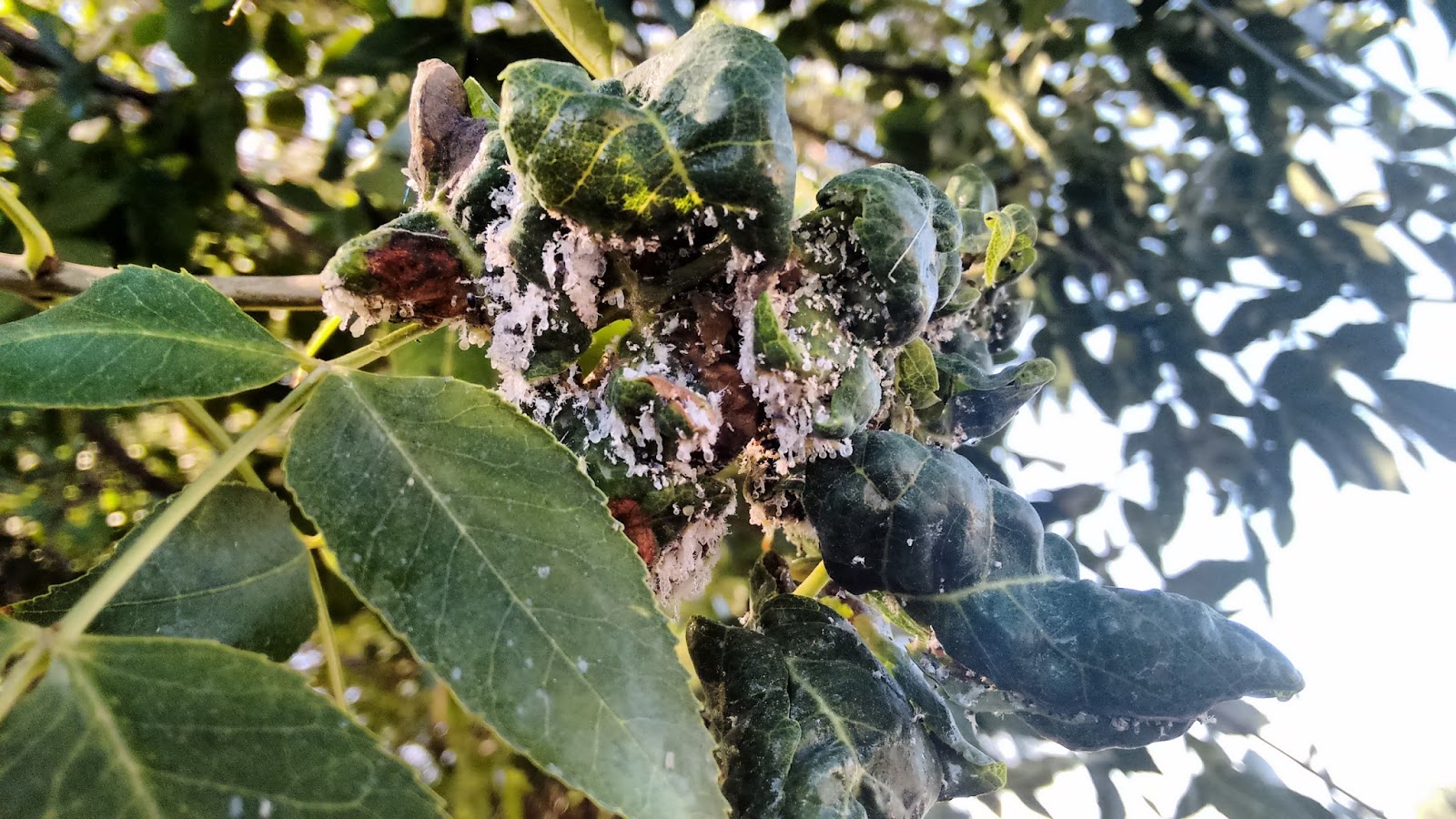As a proud owner of an American mountain ash tree, I love admiring its graceful form, bright red berries, and vibrant fall foliage. However, I was concerned when I noticed some of the leaves starting to curl under. Curled leaves can indicate an underlying issue, so I did some research to learn about the possible causes. Here’s an overview of the key reasons American mountain ash leaves may begin to curl and how to address them.
Aphid Infestations
One common cause of curled leaves on mountain ashes is infestations by aphids, tiny sap-sucking insects. The aptly named ash leafcurl aphid is a woolly species that feeds on the undersides of leaves, causing them to distort and curl downward. Honeydew secretions and clusters of aphids on branches are signs of an infestation.
To treat aphids, prune out heavily infested branches Hose the tree with a strong spray of water to dislodge the insects Insecticidal soaps and oils can also help control populations. Promoting natural predators like ladybugs and lacewings is a natural way to keep aphids in check.
Environmental Stress
Hot dry weather coupled with insufficient water and extreme sun exposure can stress American mountain ashes leading to curled leaves. Young trees are especially prone to leaf curling under such environmental pressures.
Make sure to provide supplemental irrigation during droughts to reduce moisture stress. Consider situating vulnerable trees in partly shaded areas to protect from sunscald Adding organic mulch around the base helps maintain soil moisture.
Fungal Diseases
Fungal infections like powdery mildew and leaf spot fungus can cause distorting and curling of American mountain ash foliage. A white, powdery coating on leaves points to powdery mildew. Dark necrotic spots indicate leaf spot fungus.
Improve air circulation around affected trees. Water early in the day to allow foliage to dry out. Remove and dispose of infected leaves to reduce fungal spore levels. Apply appropriate fungicides as a preventive measure or to treat existing infections.
Nutrient Deficiencies
Insufficient levels of key nutrients like nitrogen, iron, magnesium, and manganese can lead to unusual leaf shapes and curling in American mountain ashes. Yellowing or browning foliage may accompany this symptom.
Have your soil tested to identify any nutrient shortages. Based on the results, amend the soil around your tree with an appropriate fertilizer to supply the missing nutrients. This will encourage healthy foliage growth.
Physiological Factors
In some cases, leaf curling may result from inherent physiological causes like hormonal imbalances or genetic traits. Such factors can predispose certain trees to developing curled leaves independently of environmental stresses or pests.
If no underlying causes for leaf curling are found, physiological issues may be suspected. Consult an arborist to determine if the tree requires corrective treatments. Providing optimal care can help manage symptoms.
Control Measures
- Monitor trees for early signs of pests like aphids
- Water deeply during dry periods
- Improve air circulation and sunlight exposure
- Apply preventive fungicide treatments
- Have soil tested and amend as needed
- Seek expert diagnosis for unexplained curling
By identifying and addressing the cause of leaf curling in American mountain ashes, the health and beauty of these trees can be preserved. With prompt action, mountain ash trees can recover from leaf curling and continue gracing the landscape.

️ Defending Your Ash: Pest and Disease Tactics
Early detection is your first line of defense against pests and diseases. Regularly inspect your Ash for any signs of trouble—vigilance can save your tree from becoming an all-you-can-eat buffet for aphids and spider mites. If you do spot pests, insecticidal soap is your go-to, acting like a bouncer at the door of a club. For diseases, remember that dry leaves are less inviting for fungi; water at the base to keep the foliage dry. And if you must resort to fungicides, use them with the precision of a sniper to avoid collateral damage to beneficial insects.
Spotting the Culprits Behind Curly Leaves
Under-watering and heat waves can leave American Ash leaves looking more like crinkled paper than lush foliage. To prevent this, maintain a consistent watering schedule. Check the soil moisture by feeling an inch below the surface; if its dry, its time for water. But remember, Ash trees arent aquatic plants; avoid overwatering to prevent root rot.
Problems on ash tree leaves |Daphne Richards |Central Texas Gardener
FAQ
How do you treat ash leaf curl aphids?
Why are the leaves on my tree curling up?
What deficiency causes curling of leaves?
What does a sick ash tree look like?
What causes black spots on ash trees?
This fungal disease causes brown or black spots on ash tree leaves, leading to early leaf drop and a sparse canopy. Prune affected branches and ensure good air circulation to prevent the spread of the disease. Scale insects feed on the sap of ash trees, weakening the tree and causing yellowing of leaves.
Why is my mountain ash tree wilting?
Identification: Root rot is a common problem in American mountain ash trees caused by various soil-borne pathogens. Symptoms include wilting, yellowing foliage, stunted growth, and dieback of branches. Treatment: Improving soil drainage by avoiding overwatering and planting in well-draining soil can help prevent root rot.
Do aphids damage American mountain ash trees?
They are a common pest that can cause damage to American Mountain Ash trees by causing leaf curling, yellowing, and stunted growth. Signs of aphid infestation include the presence of sticky honeydew residue on leaves, black sooty mold growth, and the presence of the insects themselves.
Why is my ash tree drooping?
Spotting signs of trouble in your ash tree is crucial to addressing issues promptly and effectively. Here are common indicators that your ash tree may be experiencing problems: Wilting Leaves: If you notice that the leaves on your ash tree are wilting or drooping, it could be a sign of underlying stress or disease.
